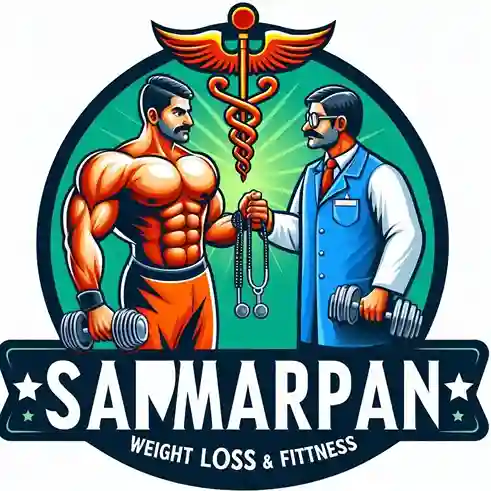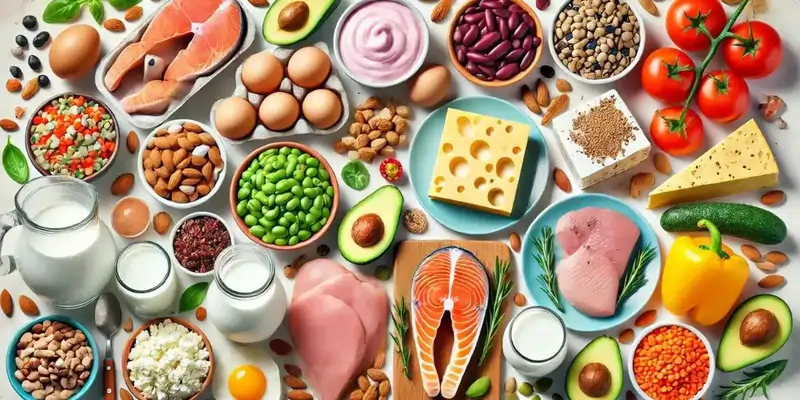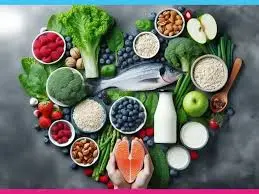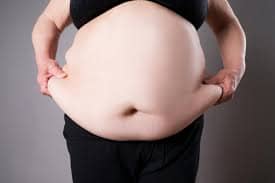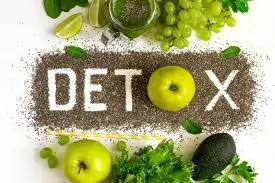17 Best Food High In Protein
It is crucial to eat meals high in protein since they support weight loss, muscle growth and maintenance, and overall health. Protein is a necessary dietary component needed for the human body’s growth, repair, and proper operation.
The subsequent essay will provide some insight into the different foods that are high in protein, which can help anyone who wants to work, maintain a healthy lifestyle, or just eat a balanced diet.
Reasons for the necessity of protein
The structure groups of the body are proteins. They involve bones, cartilage, muscles, blood, skin, vitamins, hormones, and enzymes. Growth and development, the repair and construction of cells and tissue, including muscle, and bodily functions including blood coagulation, fluid balance, and the immunological response all depend on them.
Amino acids are used to make proteins. Certain amino acids are produced by our bodies naturally. We refer to these as nonessential amino acids. However, we need to eat foods that contain nine amino acids for our bodies to get them. They’re referred to as essential amino acids and are required for regular bodily processes.
Food High In Protein
For many bodily processes to operate properly, getting adequate protein is essential. While some amino acids, related to essential amino acids, must be admitted through diet, others are created by the body.
Protein is especially important for growth in children, teenagers, and expectant mothers. Diverse animal and plant sources of protein, such as beans, lentils, eggs, poultry, lean meats, nuts, seeds, seafood, soy products, and dairy products, are advised for human consumption.
- Chicken Breast
- Eggs
- Greek Yogurt
- Almonds
- Lean Meats
- Fish
- Shellfish
- Lentils
- Beans
- Cottage Cheese
- Milk
- Tofu
- Nuts
- Protein powders
- Peanuts and peanut butter
- Chickpeas
- Black Beans
Chicken Breast
- Chicken breast, often known as white meat, has a low fat content. 3.5 ounces of warped, exterior chicken breast has 31 grams of protein.
- Zinc, selenium, potassium, and B vitamins are also found in chicken.
- The following are healthy methods for cooking chicken poaching, roasting, baking, and broiling.
Eggs
- There are six grams of protein in one large egg.15 The egg white comprises the majority of the protein, but the yolk also has important antioxidants, vitamins, and minerals.
- You can cook eggs for any meal, or you can have hard-boiled eggs as a post-workout or in-between snack.
- Though entire eggs, which include the yolk, have many more nutrients, such as vitamins, minerals, antioxidants, and good fats, keep in mind that egg whites are nearly pure protein.
Greek Yogurt
There are 14 grams of protein in a 5-ounce portion of plain, low-fat Greek yogurt. Greek yogurt, like cottage cheese, is a wonderful source of a variety of nutrients. As a snack, it can be consumed on its own or combined with other meals like
- topped with seeds, nuts, or fruit
- In combination with whole-grain cereal, it’s substituted for sour cream in tacos, potatoes, and dips.
- Incorporated into smoothies
- used in chicken or tuna salads in place of mayonnaise.
Almonds
- Almonds are also beneficial for providing people with protein in addition to fat.
- A more practical serving amount of 28 grams, or about a handful, yields just 6 grams of protein, whereas 100 grams of almonds supply 21 grams.
- It may be eaten on its own with cold water or added to other meals to boost protein content.
Lean Meats
Reduced saturated fat content makes lean meat slices heart-healthy and a rich source of protein. The protein composition of a 3.5-ounce portion of lean meats includes the following examples
- Top sirloin 29 grams
- 26 g of flank steak
- Brisket of beef 32 g
- 26 g of sirloin tip
- Ground beef, 93 lean 29 g
- Tenderloin pork 26g
Fish
- In addition to being a great source of protein, fish also contains a number of vital vitamins and minerals, including vitamin B12, iodine, and selenium.
- Consuming large amounts of fish lowers the risk of heart disease and type 2 diabetes, among other illnesses.
- Additionally, fatty fish like salmon and herring are rich in omega-3 fats, which have several health advantages, including promoting heart health.
Shellfish
Shellfish may be divided into two categories mollusks( which include clams, mussels, oysters, scallops, octopus, squid, abalone, and snails) and crustaceans( which include prawns, crab, and lobster). Protein, zinc, and vitamin B12 are all set up in good quantities in shellfish.
For instance, 3.5-ounce portions of cooked shellfish can have the following amounts of protein:
- 24 grams of prawns
- 22 grams of crab
- Lobster 19 grammes
- Clams 26 grammes
- 24 grammes of mussels
- 20 grams of scallops
It’s crucial to remember that shellfish are the most prevalent food allergies in adults and one of the most prevalent in children.
Because shellfish allergies can range from minor to severe, it’s imperative that those who have them avoid this protein source.
Lentils
- Lentils include a lot of minerals, including iron, magnesium, potassium, zinc, and B vitamins, in addition to protein. There are 18 grams of protein in one cup of twisted lentils.
- They also contain a lot of fiber, with a 1-cup serving to contain over 16 grams, which is more than half of the daily limit.
- You may add lentils to soups and salads, or serve them as a main course or as a side dish.
Beans
The following are just a few of the numerous possible health advantages of beans, an affordable protein source that’s also high in fiber
- reducing blood sugar levels in diabetics
- lowering blood pressure and cholesterol levels
- Reducing inflammation and promoting intestinal health
- Half a cup of cooked beans, such as kidney, pinto, garbanzo, and black beans, can provide 6 – 7 grams of protein.
Cottage Cheese
Cottage cheese, which has a high protein content, is another isaceous cheese. One hundred grams of cottage cheese contains about 11 grams of protein. It’s excellent in salads, may be mixed with fruits to create smoothies, or can be eaten by itself with fruit or herbs.
Milk
- In addition to the 13 necessary nutrients—calcium, vitamin D, vitamin A, vitamin B12, zinc, selenium, and potassium—a cup (8 ounces) of cow’s milk contains 8 grams of protein.
- Regardless of the fat percentage (whole, 2%, 1%, or nonfat), milk has the same amount of protein and nutrients.
- Adding protein to a snack or meal may be done quickly and easily with milk. To increase your intake of total protein, you can add milk to a smoothie or drink a glass with your meal or snack. Choose products that are lactose-free if you are intolerant to lactose.
Tofu
- The process of curdling soy milk and pressing it into solid blocks creates tofu, also known as soybean curd.
- A variety of shapes are available, such as silky, firm, and very firm. Along with healthful fat, vitamins, minerals, and isoflavones (plant chemicals that have a range of possible health advantages), a half-cup portion of firm tofu has around 22 grams of protein.
- You have the option of purchasing marinated and baked tofu or cooking it yourself in a number of methods, such as baking, stir-frying, or grilling.
Nuts
- Remember the protein content of each serving.
- Although they are high in protein, nuts also contain more calories per serving. Frequently, they are consumed in lower amounts.
- They might be a tasty snack by themselves or in combination with other items.
Protein Powders
- When you are unable to cook a meal due to time constraints, protein powder might be invaluable.
- Shakes, smoothies, energy balls, yogurt, and other foods can all benefit from the simple addition of protein powders like whey and pea protein to boost their protein and filling content.
Peanuts and Peanut Butter
- Protein, folate, magnesium, and vitamin E are among the many nutrients found in peanuts and peanut butter.
- You may feel more satisfied after eating peanuts and peanut butter because of their high protein content. Indeed, research suggests that including peanut butter in a high-carb meal may lessen post-meal blood sugar rises.
Chickpeas
A cooked cup of chickpeas has around 15 grams of protein, making them another plant-based meal high in protein. In addition, they contain fiber and may be added to salads, soups, and hummus as well as cooked as vegetables.
Black Beans
Among the plant-based protein sources that are high in fiber are black beans. According to current knowledge, one cup of cooked black beans only has around 15g of protein. Their high fiber content allows them to be utilized in a variety of recipes and consumed in salads, soups, and stews.
Summary
Since it helps control body mass and supports muscles, protein is a food that the human body needs. The components of this cuisine have been shown to give the body vital nutrients through a balanced diet that emphasizes a range of foods with a high protein content.
If one is vegetarian, vegan, or an omnivore, it is maybe worth mentioning that there are plenty of protein-related alternatives available. Enjoy the benefits of eating a diet high in protein by starting to incorporate these items into your diet.
People over 70 should closely monitor their protein intake to be sure they are receiving enough, while athletes and pregnant women may require additional protein.
FAQ’s
What foods are very high in protein?
Lean meat, poultry, and seafood are often the foods with the highest protein content. However, soy products, beans, almonds, seeds, and eggs can also provide protein.
How can I consume 100–150g of protein each day?
Selecting foods high in protein for every meal can help you accomplish your daily goal of 100g. Salmon fillet, chicken breast, and Greek yogurt may all be included in this. You may use plant-based foods like tofu, beans, and peanuts to help you attain your objective.
How can I eat more protein?
Eating foods high in protein, such as lean meat, poultry, fish, dairy products, or eggs, at every meal will help you consume more protein overall. Beans, legumes, nuts, and seeds are other edible sources of plant-based protein.
Does dal have protein?
Eight to fifteen grams of protein and fifteen to thirty grams of carbs are found in every 100 grams of cooked dal, Aiyer continued. Even 15 grams of protein from a particular dal would need a large amount of it, which may meet the amino acid profile but not be effective in terms of consumption.
Does boiling reduce protein?
This study, however, shows that boiling reduces protein loss more effectively than steaming. This could be a result of steam’s higher latent heat than boiling water’s. This results in greater cooking temperatures, which denaturise proteins. Vitamin C is the only vitamin for which research has been conducted.
References:
- Rd, J. K. M. (2023, October 18). 16 delicious high-protein foods. Healthline. https://www.healthline.com/nutrition/high-protein-foods
- Prasannakumar, S. (2024, September 23). What are 20 High Protein Foods? Genetic Nutrition. https://www.geneticnutrition.in/blogs/genetic-life/what-are-20-high-protein-foods?srsltid=AfmBOooO9qph-05-OoY6hzU_9EncuMoBrvDcp6LkfLeN1t_7PHDbHrmi
- Restivo, J. (2023, December 1). High-protein foods: The best protein sources to include in a healthy diet. Harvard Health. https://www.health.harvard.edu/nutrition/high-protein-foods-the-best-protein-sources-to-include-in-a-healthy-diet
- Tresca, A. J. (2024, September 9). What foods are high in protein? Verywell Health. https://www.verywellhealth.com/high-protein-foods-7496700
